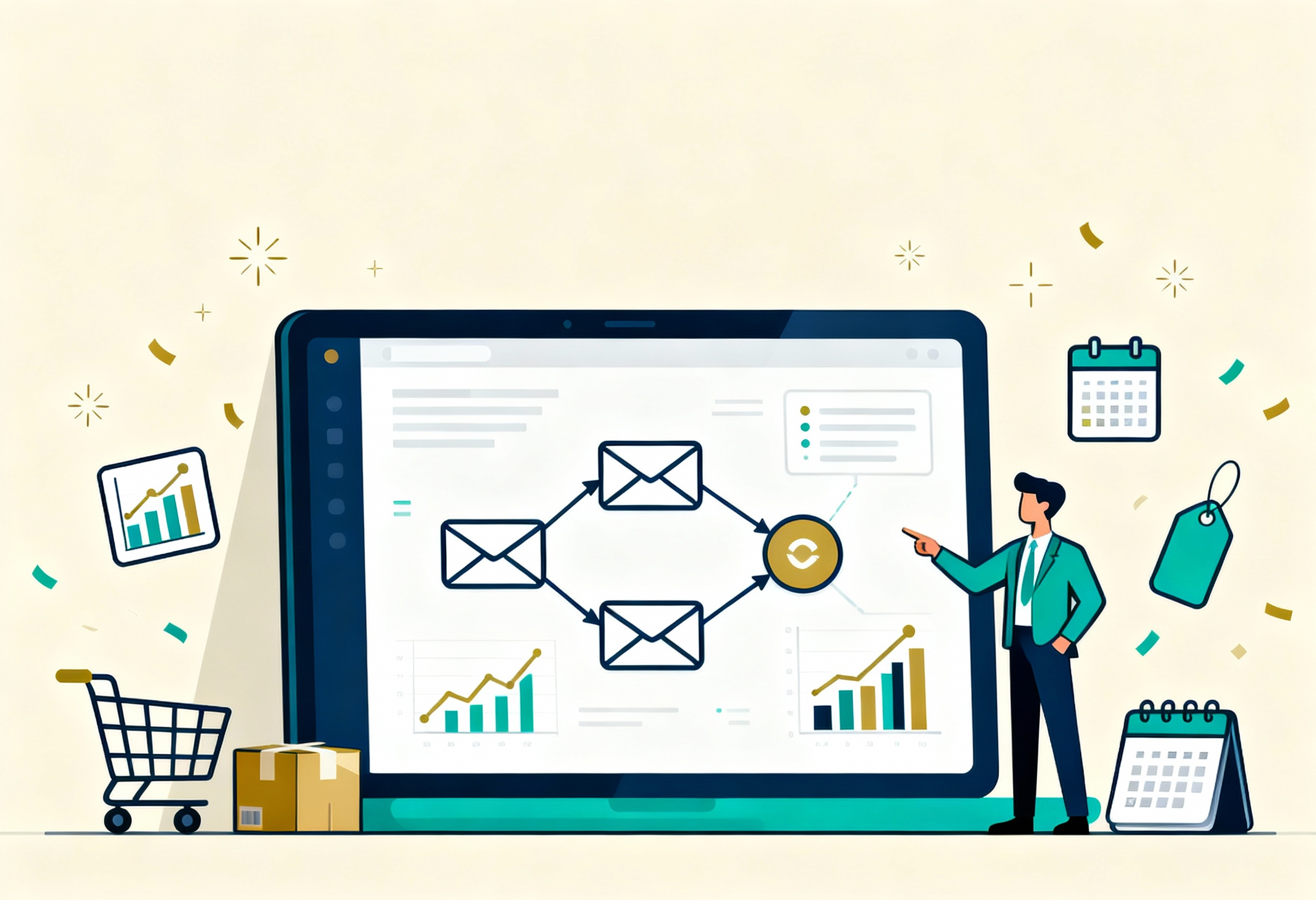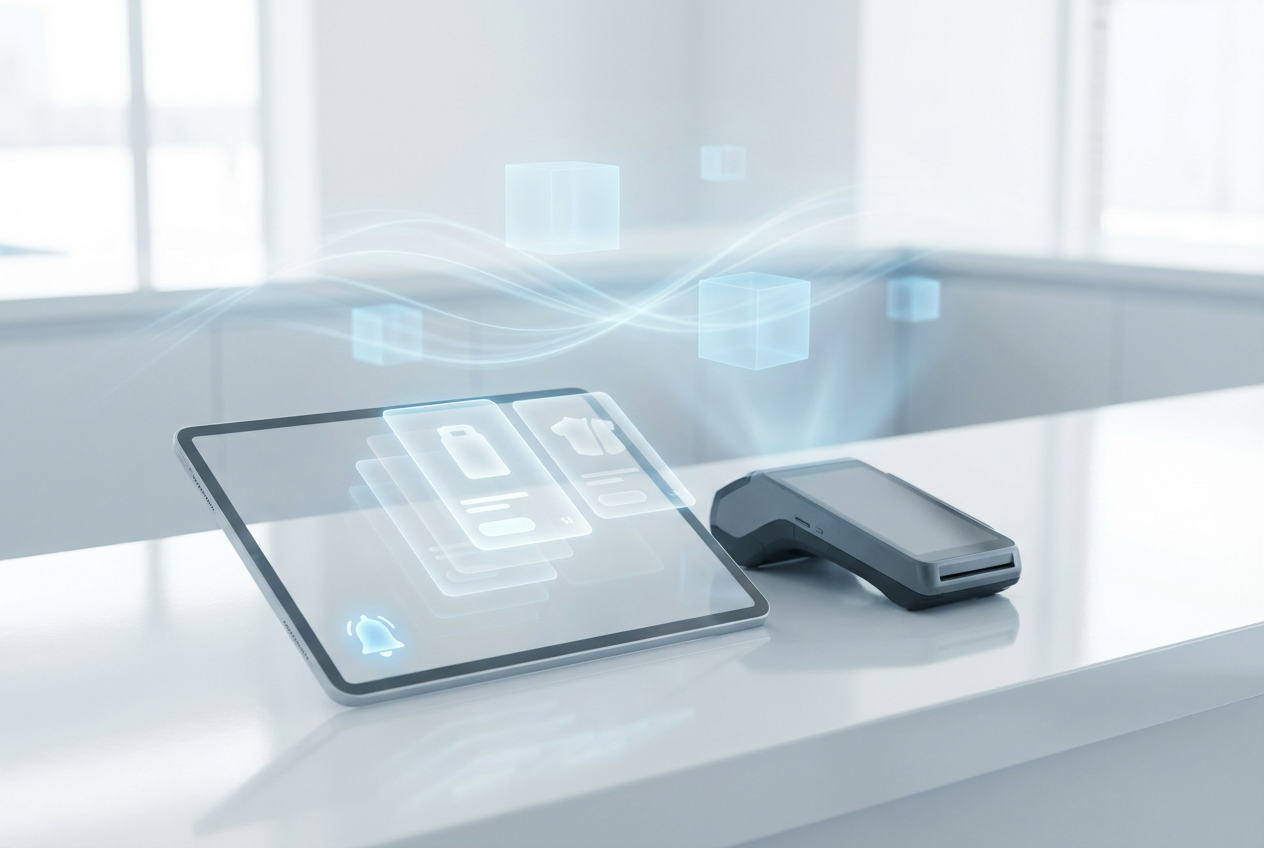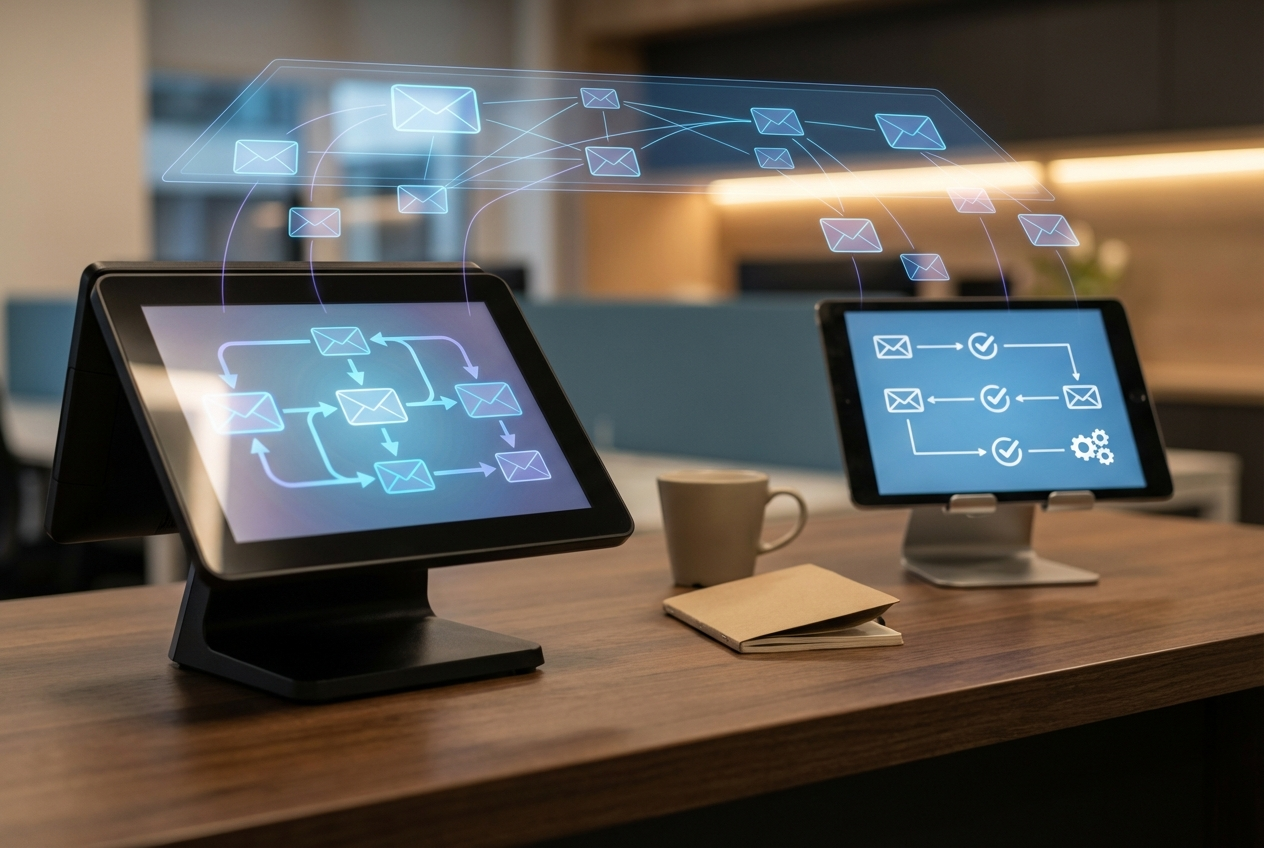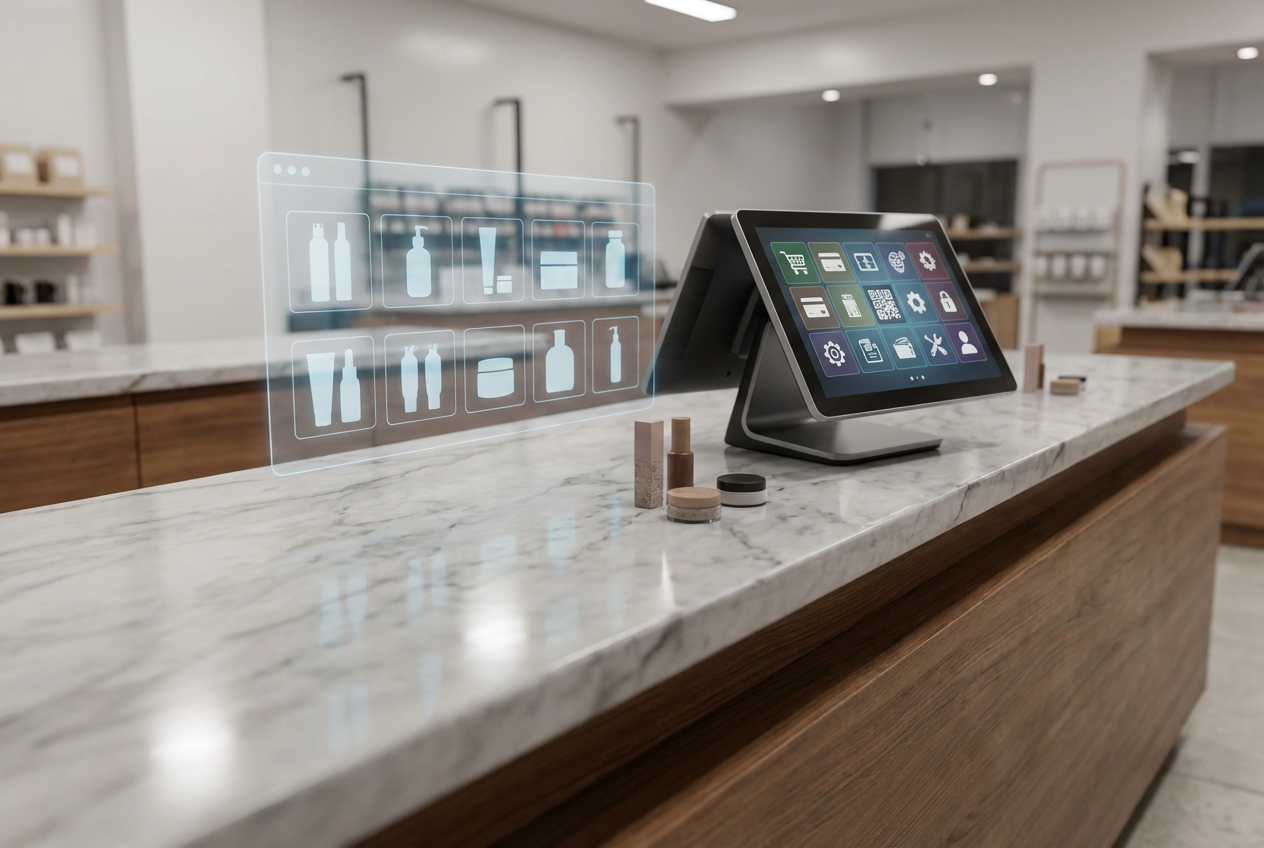Today, businesses require intelligent tools to foster lasting customer relationships and optimize sales. One of the most popular strategies is email marketing automation for ecommerce, which brands use to deliver personalized experiences at scale. According to Statista, global email marketing revenue is projected to reach $17.9 billion by 2027, proving its effectiveness.
From the ConnectPOS article, we recommend businesses start embracing automation not only to streamline communication but also to maximize customer lifetime value.
Highlight:
- Email marketing automation for ecommerce empowers businesses to build lasting customer relationships, recover lost sales, and maximize customer lifetime value with minimal manual effort.
- When starting with clear goals, the right platform, and effective workflows, brands can boost retention, drive revenue growth, and scale smarter.
What is Email Marketing Automation for eCommerce?
Email marketing automation for ecommerce is the process of sending pre-scheduled, behavior-driven emails to customers based on their interactions with your store. Instead of manually sending each campaign, automation ensures the right message reaches the right person at the right time.
For example, when a shopper abandons their cart, an automated reminder email can be sent to encourage them to complete their checkout. Similarly, post-purchase thank-you emails and personalized product recommendations can enhance customer loyalty.
According to HubSpot, automated emails generate 320% more revenue than non-automated emails. That’s because they are not only personalized but also timely making them more effective at driving engagement and conversions. For ecommerce stores, this means less manual work and more focus on customer experience and scaling sales.
Benefits for Ecommerce Businesses When Using Email Automation
Email marketing automation for ecommerce is a powerful strategy that empowers brands to build lasting relationships with customers and increase profitability.
- Increase Customer Retention: Winning new customers often comes at a high cost. With automation, you can nurture existing customers through personalized offers, loyalty rewards, and timely reminders driving repeat purchases and strengthening long-term relationships
- Improve Personalization: Automation leverages customer data to send personalized product recommendations, special birthday discounts, or content based on browsing history, turning generic outreach into meaningful experiences.
- Minimize Abandoned Cart Losses: Cart abandonment rates average 70.19% globally (Baymard Institute). Automated cart recovery emails gently remind shoppers of unfinished purchases, often with incentives to complete the checkout process.
- Boost Sales and Revenue: Well-crafted automation workflows such as upselling, cross-selling, or post-purchase recommendations can significantly increase order values and generate steady revenue growth.
Where to Begin with Email Marketing Automation for Ecommerce?
Starting email marketing automation for ecommerce requires a clear roadmap. When following structured steps, businesses can maximize impact, save resources, and create meaningful customer experiences that drive loyalty and conversions.
Step 1: Define Your Goals
The first step in email marketing automation for ecommerce is to establish clear goals. Decide whether your focus is on minimizing cart abandonment, boosting sales, encouraging repeat purchases, or building stronger brand loyalty.
Having measurable objectives guarantees that your automation strategy is purposeful and results-driven.
Step 2: Build and Segment Your Email List
A strong email list is the backbone of automation. Encourage sign-ups through incentives such as discounts, free guides, or exclusive offers. Once you’ve built your list, segment it based on factors like demographics, browsing behavior, or purchase history.
►►► Optimal solution set for businesses: Multi store POS, Next-gen POS, Inventory Management Software (MSI), Self Service, Automation, Backorders
Segmentation ensures that customers receive messages relevant to their needs, which significantly improves engagement and conversion rates.
Step 3: Select the Right Email Marketing Platform
Selecting the right platform makes email marketing automation for ecommerce seamless and efficient. Choose a system that integrates with your ecommerce store, supports customizable workflows, and offers analytics to track results.
Platforms like ConnectPOS, Omnisend, or Mailchimp are popular choices, but the best solution depends on your business size, industry, and budget.
Step 4: Map Customer Journeys
Think about the different touchpoints where your customers interact with your brand, first visit, first purchase, cart abandonment, repeat orders, and even inactivity. Map these journeys to design automation workflows that guide customers from one stage to the next.
For example, a new subscriber might receive a welcome series, while a past buyer could get cross-sell recommendations. Mapping ensures no opportunity for engagement is missed.
Step 5: Craft Compelling Email Content
Automation works only if the content resonates. Invest in writing persuasive subject lines that drive opens, personalize offers to customer preferences, and design emails with clear calls to action.
Use visuals that align with your brand and ensure mobile responsiveness, as most shoppers check emails on smartphones. Strong content transforms automation from routine communication into a powerful driver of sales and customer loyalty.
Step 6: Test and Improve
The final step is continuous optimization. Use A/B testing to compare subject lines, email designs, send times, and CTAs. Review performance metrics like open rates, click-through rates, and conversions to identify what works best.
Refining your workflows regularly keeps campaigns relevant and effective, ensuring that your automation evolves alongside customer expectations and market trends.
Effective Email Automation Workflows for Ecommerce
Implementing the right workflows in email marketing automation for ecommerce helps brands engage customers at every stage of the journey, turning casual visitors into loyal buyers and long-term advocates.
- Welcome Email Series: A welcome email series introduces your brand, highlights bestsellers, and builds trust. Automated welcomes have an average open rate of 86%, making them one of the most impactful workflows in email marketing automation for ecommerce.
- Abandoned Cart Emails: Shoppers often leave items in their carts without completing checkout. Abandoned cart emails act as timely reminders, sometimes paired with incentives, to recover lost sales and boost conversions.
- Post-Purchase Follow-Ups: These emails thank customers for their purchase, provide order details, and encourage product reviews or cross-sells. Post-purchase workflows strengthen relationships and increase repeat business.
- Browse Abandonment Emails: When visitors browse products but don’t add them to the cart, browse abandonment emails re-engage them with personalized recommendations. This keeps your brand top-of-mind and drives them back to your store.
- Re-Engagement Campaigns: Inactive subscribers can be reactivated with win-back campaigns that highlight new arrivals, exclusive offers, or loyalty rewards. These workflows reduce churn and maximize customer lifetime value.
- Loyalty and Rewards Emails: Rewarding repeat customers with exclusive perks, discounts, or early access to collections encourages ongoing engagement. Automated loyalty emails foster stronger customer relationships and brand advocacy.
Key Metrics to Track in Ecommerce Email Automation
To measure the success of email marketing automation for ecommerce, businesses must monitor performance across several critical metrics. Tracking these ensures that campaigns are not only delivering messages but also driving measurable growth.
- Open Rate: Indicates how many recipients open your emails. A strong open rate shows effective subject lines and accurate audience targeting.
- Click-Through Rate (CTR): Measures the percentage of recipients clicking links in your emails. This reveals how engaging your content and calls-to-action are. For ecommerce, businesses typically aim for a 2–3% CTR.
- Conversion Rate: Tracks how many recipients take the desired action, such as completing a purchase. Conversion rates tie directly to revenue, making this one of the most important metrics.
- Revenue per Email (RPE): Shows the monetary value of each email sent. According to Litmus, email marketing achieves an average ROI of $36 for every $1 spent, a powerful indicator of email’s profitability.
- Bounce Rate: Measures undeliverable emails. High bounce rates can damage your sender reputation, making regular list cleaning and validation imperative.
- Unsubscribe Rate: Monitors how many people opt out of receiving your emails. A sudden increase often points to irrelevant content, over-communication, or lack of personalization.
- Customer Lifetime Value (CLV): Reflects the total value a customer brings to your brand over time. Automation plays a significant role in boosting CLV by encouraging repeat purchases and deepening customer engagement.
While tracking metrics is vital, optimizing them requires the right tools. This is where ConnectPOS stands out. As an omnichannel retail solution, ConnectPOS integrates seamlessly with ecommerce platforms, bridging the gap between customer data, sales activity, and automated marketing.
- Improved Open & Click Rates: With ConnectPOS syncing real-time customer profiles, brands can then send highly personalized campaigns that resonate better with audiences, improving both open and click-through rates.
- Maximized Revenue per Email: With deep integrations into product catalogs and inventory, ConnectPOS enables targeted upselling and cross-selling strategies, increasing the value of every email sent.
- Reduced Bounce & Unsubscribe Rates: Clean customer data management within ConnectPOS ensures emails are delivered to the right recipients, lowering bounce rates and reducing list fatigue.
- Consistent Experience Across Channels: Because ConnectPOS syncs data across ecommerce and brick-and-mortar locations, emails can reflect real-time information, such as local store events, in-stock items at nearby locations, or loyalty rewards earned in person. This consistency builds trust and encourages repeat visits.
- Smarter Segmentation: Segment your email list based on real purchase behavior, not just web activity. For example, send tailored campaigns to VIP customers, first-time buyers, or those who haven’t purchased in a while, based on synced POS and ecommerce data.
- Faster Resolution Through Unified Profiles: When customers respond to an email with a question or concern, staff can access their full profile, including past orders, returns, and store visits, right from the POS. This resolves issues faster and keeps the experience smooth.
When tracking these metrics and leveraging ConnectPOS, ecommerce businesses can transform email automation from a simple communication tool into a powerful revenue-generating engine.
FAQs: Email Marketing Automation For Ecommerce
- Which types of automated emails work best for ecommerce?
Abandoned cart emails, welcome series, post-purchase follow-ups, and loyalty campaigns are the most effective for increasing engagement and conversions.
- How do I choose the best email marketing automation platform for ecommerce?
Look for ease of use, integrations with your ecommerce system, advanced segmentation, and analytics features to ensure long-term scalability.
- What are the common mistakes in email marketing automation?
Common pitfalls include over-emailing, sending irrelevant offers, ignoring testing, and neglecting personalization all of which can lead to unsubscribes and lower ROI.
Conclusion
In conclude, email marketing automation for ecommerce empowers businesses to deliver personalized experiences, recover lost sales, and increase customer lifetime value with less manual effort.When starting with clear goals, the right platform, and compelling workflows, ecommerce brands can maximize growth and profitability.
If you’re looking for a solution that seamlessly integrates marketing, sales, and customer loyalty into one powerful system, ConnectPOS is the right partner. Contact us today to see how we can help your ecommerce store scale smarter with automation.
►►► Optimal solution set for businesses: Shopify POS, Magento POS, BigCommerce POS, WooCommerce POS, NetSuite POS, E-Commerce POS



